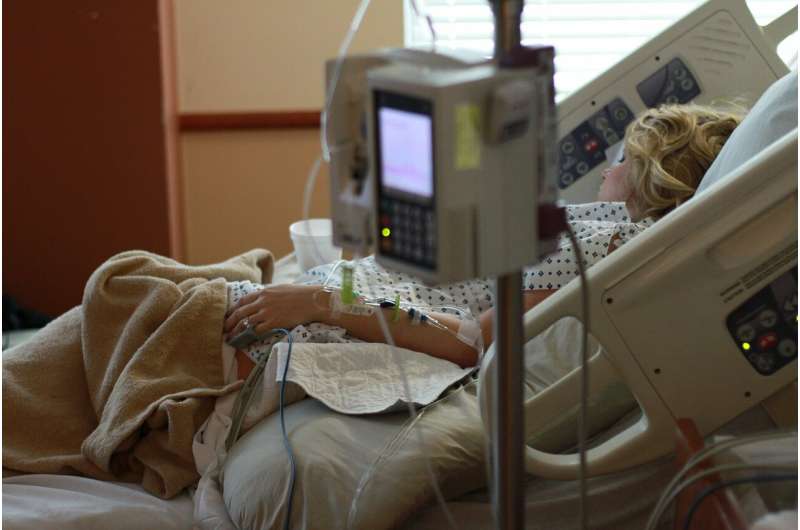Covid-19 tool allows health leaders to plan for critical care surge

Hospitals can prepare for a surge of patients critically ill with COVID-19, but it will require hospital leaders, practitioners and regional officials to adopt drastic measures that challenge the standard way of providing care, according to a new RAND Corporation report.
The analysis summarizes a range of evidence-based and promising strategies for creating critical care capacity in the nation's hospitals. It includes a simple-to-use online tool that allows decision-makers at all levels—hospitals, health care systems, states, regions—to estimate current critical care capacity and rapidly explore strategies for increasing it.
"Because the crisis falls upon a system that already is stretched thin, creating the critical care capacity needed for the surge in COVID-19 patients will require creative thinking about the allocation and use of space, staff and the stuff needed to provide critical care," said Dr. Mahshid Abir, co-author of the report and a senior physician researcher at RAND, a nonprofit research organization. She also is an emergency medicine physician at the University of Michigan and director of the university's Acute Care Research Unit.
The RAND report is based upon a review of research about experiences during past outbreaks (including SARS, MERS and others), a survey of front-line clinicians conducted in collaboration with the American College of Emergency Physicians, and two roundtables conducted by conference call with leading emergency and critical care physicians and public health and preparedness experts from around the country.
The research identified two tiers of activities that hospitals can take to expand critical care capacity.
The first tier includes strategies to expand critical care capacity without significantly impacting the ability to provide other medical care. Those approaches include things such as acquiring additional ventilators from stockpiles and converting some operating rooms to critical care units.
The second tier focuses on crisis capacity strategies that are likely to significantly impact routine care delivery and operations. This might include turning regular hospital beds into critical care beds and re-opening shuttered hospitals. It also includes items such as changing staffing and supervisory ratios, altering standards of care.
To illustrate the possible impact of the strategies on capacity, researchers used publicly available data on the 10 Federal Emergency Management Agency Regions to estimate the number of patients that could be accommodated, given the number of available critical care doctors and nurses, respiratory therapists, ventilators, and beds.
The analysis found the number of ventilators is the most common limiting factor, followed by the number of critical care doctors. The number of nurses, respiratory therapists, or beds were not the limiting factor in any FEMA region.
As expected, the capability to move to higher tiers increases capacity. But the degree of increase in critical care surge depends on both the amount of resources available and the specific combinations. In most situations, the Tier 2 options produce considerably more capacity than Tier 1 options, but in some cases, there is little additional gain.
In the survey of 343 physicians conducted nationally on March 13, the most-cited concerns were shortages in diagnostic kits, a shortage of negative pressure room capacity, and a shortage of N95 masks.
Roundtable participants emphasized the need for real-time information sharing to increase situational awareness of critical care surge capacity among hospitals and across regions.
"When Italy began to appreciate the community spread of COVID-19, it began using an ICU network to increase capacity to care for and to distribute infected patients and non-COVID-19 patients with critical care needs," said Christopher Nelson, co-author of the study and a senior political scientist at RAND. "Regionalization of critical care should be considered as the United States prepares for a surge in critical care needs with COVID-19."




















